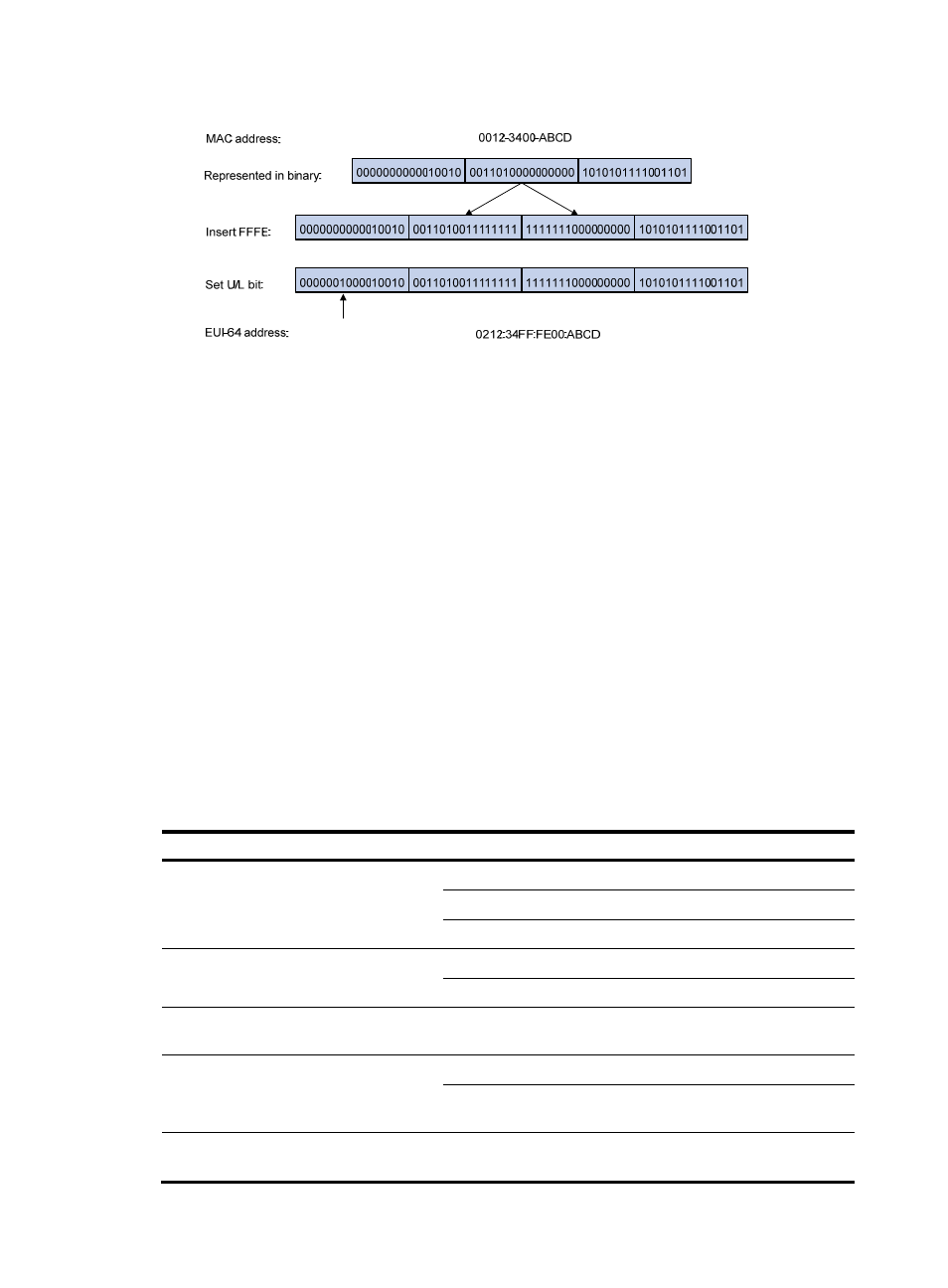Ipv6 neighbor discovery protocol – H3C Technologies H3C S12500 Series Switches User Manual
Page 150

136
Figure 58 Converting a MAC address into an EUI-64 address-based interface identifier
•
On a tunnel interface
The lower 32 bits of the EUI-64 address-based interface identifier are the source IPv4 address of
the tunnel interface. The higher 32 bits of the EUI-64 address-based interface identifier of an
ISATAP tunnel interface are 0000:5EFE, whereas those of other tunnel interfaces are all zeros. For
more information about tunnels, see "Configuring tunneling."
•
On an interface of another type (such as a serial interface)
The EUI-64 address-based interface identifier is generated randomly by the switch.
IPv6 neighbor discovery protocol
The IPv6 Neighbor Discovery (ND) protocol uses five types of ICMPv6 messages to implement the
following functions:
•
•
Neighbor reachability detection
•
•
Router/prefix discovery and address autoconfiguration
•
Table 9 ICMPv6 messages used by ND
ICMPv6 message
Type
Function
Neighbor Solicitation (NS)
message
135
Acquires the link-layer address of a neighbor.
Verifies whether a neighbor is reachable.
Detects duplicate addresses.
Neighbor Advertisement
(NA) message
136
Responds to an NS message.
Notifies the neighboring nodes of link layer changes.
Router Solicitation (RS)
message
133
Requests for an address prefix and other configuration
information for autoconfiguration after startup.
Router Advertisement (RA)
message
134
Responds to an RS message.
Advertises information such as the Prefix Information options and
flag bits.
Redirect message
137
Informs the source host of a better next hop on the path to a
particular destination when certain conditions are met.